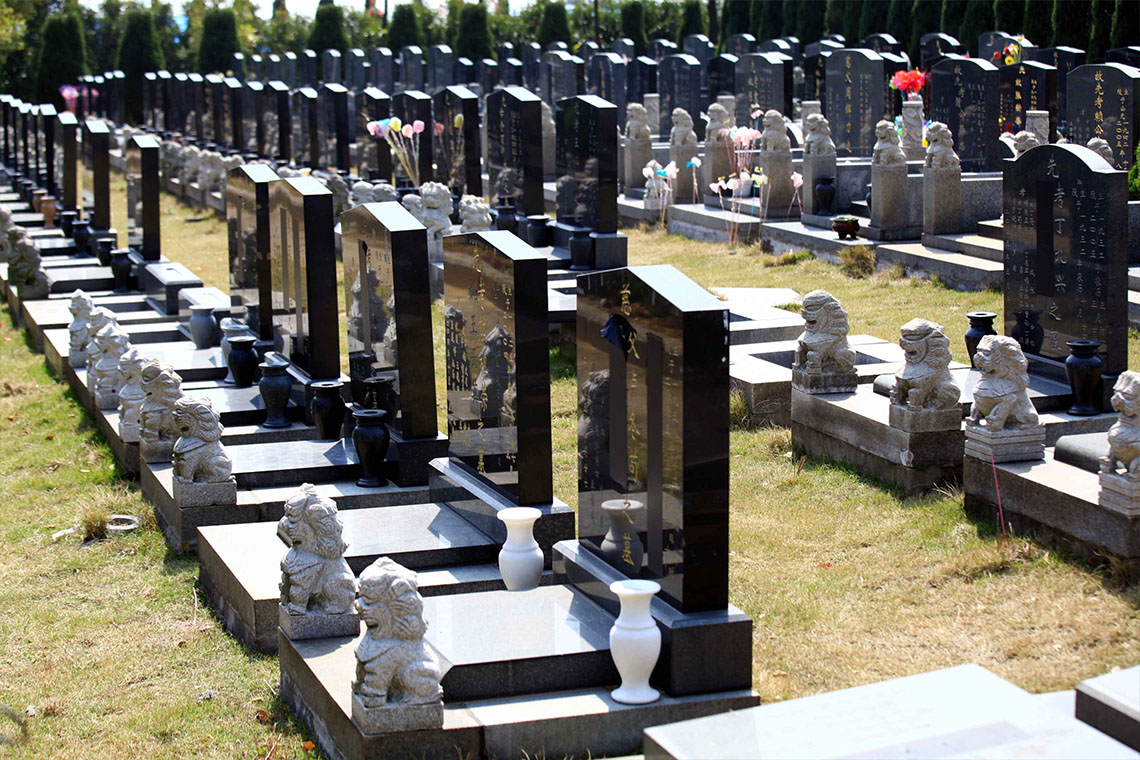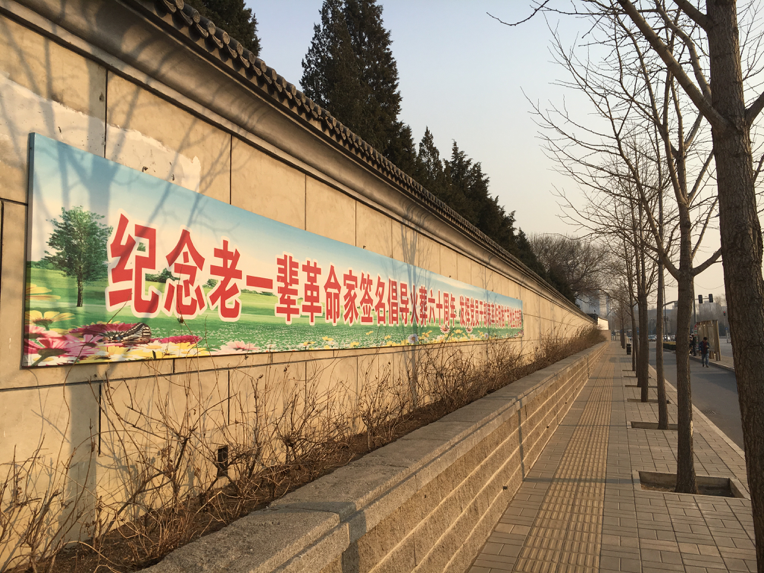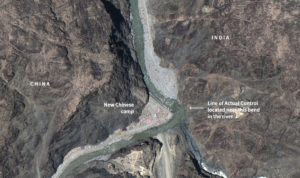Too many corpses to bury: China’s new campaign for cremation
In 1956, Mao Zedong proposed cremation as a modern way to dispose of the dead that would eliminate the feudal superstitions associated with traditional burials. As China’s cities run out of spaces for graveyards, a new campaign rebrands cremation as “eco-burial.”

On a Friday afternoon in March, a few weeks before China’s annual Tomb-Sweeping Festival (清明节 qīngmíng jié), two workers in the Babaoshan Revolutionary Cemetery were bent over a grave. One lounged in the seat of an idle tractor while his colleague labored inside the pit with a spade.
“These graves are too small to use a machine,” he said, “so we dig them by hand.”
The Babaoshan Revolutionary Cemetery in Beijing’s Shijingshan District, home to Chinese Communist Party luminaries, installed a 620-meter-long corridor, large enough for 10,020 additional cremation niches, in 2013 to create room for future interments. The cemetery is also digging new plots.

The same cannot be said of the adjacent Babaoshan People’s Cemetery, a resting site for non-Party members, which ran out of space in 2012 and stopped selling new graves. Zhai Rongji, who works as a security guard at Baobaoshan People’s Cemetery, says he still turns people away at the gate. “They come looking for empty plots, so I have to explain it to them.”
Graves are more expensive than apartments
While graveyard space has remained limited, the populations of many Chinese cities have spiked. This imbalance in supply and demand has jacked up the price of urban burials, turning them into an expensive privilege. In Beijing, residents spent an average of 70,000 yuan ($10,100) on burial expenses per death in 2014. (Beijingers’ average annual income that year was 78,000 yuan.) In many cities, the average cost of a tomb outpaces that of a new home; in Beijing, graves cost more per square meter than apartments.
The space and cost constraints have pushed many Chinese urbanites to look outside the city. At the Badaling People’s Cemetery, an hour-and-a-half drive from downtown and near a popular Great Wall site, an “Auspicious” plot of less than one square meter costs 68,000 yuan ($10,000). Many Hebei-area graveyards have reported an increase in interest. “Up to 80 percent of our customers are Beijingers who think it’s worth the price to buy a tomb in our graveyard,” one Hebei-area salesman told China.org. In September, the South China Morning Post ran an article heralding the “one industry in China with no overcapacity problem.”
While the Chinese property market has heated up once again, with property values in some cities rocketing 40 percent in 2016 alone, new graveyards must be granted licenses by local governments to operate. This cap has restricted the growth of China’s graveyard market: According to government statistics, the total number of cemeteries in the country has actually declined since 2012, even as deaths per year have increased by 120,000 over that period.

Eco-burials — cremation by another name
In response, the Party has tried to promote a new solution to these trends: “eco-burials” (生态安葬 shēngtài ānzàng). But the practice is hardly novel. Instead, it pastes a new label over a multi-decade campaign that began in the Mao era to encourage cremation over traditional funerary practices. Until the 1990s, ancestor worship was considered superstitious; traditional notions of feng shui interfered with city planning; and the use of land (for graves), wood (for coffins), and even clothing (for dressing the dead) were all seen as wasting valuable resources.
Cremation addressed many of these concerns. In 1956, Mao announced his “proposal for cremation after death” (死后火化的倡议 sǐhòu huǒhuà de chàngyì), urging Party leaders to lead by example. Though never cremated himself, Mao consistently advocated for the practice, even once telling (in Chinese) British Field Marshal Bernard Montgomery that his ashes after death ought to be “tossed at sea to feed the fish.” Few Party leaders today choose sea burials (with the notable exception of Deng Xiaoping), but nearly all of them opt to be cremated.
China’s cremation rate peaked at 53 percent in 2005, the last year of reported statistics before the 50th anniversary of Chairman Mao’s cremation proposal. In the years following, the Party unrolled massive campaigns to “memorialize” the proposal by working to boost cremation rates once again. In 2014, the Ministry of Civil Affairs announced (in Chinese) the target of a national cremation rate that’s “close to” 100 percent by 2020. A year later, the campaign became a part of the Party’s 13th five-year plan. Recently, Chongqing, Sichuan, Hainan, Guizhou, and Anhui have announced policies or conferences to accelerate progress toward the national target.
The campaign has exerted significant pressure on local officials to lift their cremation rates. In Guangdong Province, which has maintained a relatively high 90 percent cremation rate, officials from townships with the lowest rates are excluded from promotion within the Party. In 2004, a Guangdong man was detained for killing 10 people to resell their bodies to bereaved families, who were required to hand over bodies to the government. In 2014, an official from Guangdong was caught purchasing corpses smuggled in from neighboring Guangxi to meet his county’s quota of 50 percent. Both scandals (which received international media coverage) broke during the run-up to the 50th and 60th anniversaries of Mao’s pronouncement, when attention on cremation targets peaked.
Today’s eco-burial campaign attempts to present a more palatable version of cremation. Babaoshan Cemetery, which was designated a “National Patriotism Education Demonstration Site” in 2009, has established an “Ecological Demonstration Cemetery” to model eco-friendly burial methods. The site occupies 43,300 square meters outside the Babaoshan Revolutionary Cemetery and offers water, flower, and lawn burials. Meng Xiankai, Babaoshan’s director, described the site as a “park first, next a cemetery.” One review read, “If it weren’t located outside Babaoshan, people might think it’s a landscape garden.” The cemetery offers a variety of free services to incentivize burials, mirroring various citywide ordinances to the same effect.

Turn your loved one into a diamond
The campaign has also witnessed the rise of other, more creative services. Nianshiqing, a Guangzhou-based company, offers to take cremated remains and fashion customized diamonds from them. Colors range from blue to yellow, with the cheapest diamonds starting at 6,999 yuan ($1,015). The Other Shore, a Beijing-based company, sends ashes into space. The cheapest package, costing 5,600 yuan, launches ashes into Earth’s orbit for under a year. The 75,000 yuan ($10,884) package sends ashes into deep space on “a permanent celestial voyage.”
Yet despite the makeover, eco-burials face evident resistance. Earlier this month, officials in Zhenxiong County in Yunnan chased down a bereaved family who had snuck into Guizhou to evade cremation orders. The local official confronted the family and “conducted meticulous and penetrating ideological work” before exhuming the body and cremating it. (Pictures circulated on the internet.) In Anhui Province in 2014, six elderly people reportedly committed suicide in advance of a cremation order soon to take effect.
If the goal of cremation is to conserve land, enforcing cremation in rural areas would seem a curious tactic. Rural areas usually do not lack for space, while urban remains, even when cremated, can occupy several square meters of precious urban land. At times, “eco-burial” more closely resembles the Party’s preexisting ideological campaign against funerary practices considered superstitious.
With Tomb-Sweeping Day 2017 drawing near, the debate has surfaced once again. For now, the eco-burial campaign — or push for cremation — remains in dubious shape. Although crematoria have proliferated since 2005, from 5,037 nationwide to 6,063 in 2015, the cremation rate has dropped by 6 percent over the same period, holding steady at 47 percent since 2014.
Government officials said the rate has stayed relatively stable since 2005, and that there was no clear change in policy to explain the 6 percent decline. They suggested unreliable statistics as a possible source of the drop, and acknowledged the Ministry would almost certainly fall short of its 2020 target.
With eco-burials, earnest attempts to destigmatize cremation seem to have run aground against traditional beliefs. The CCP has held cremation competitions, witnessed the opening of a “cremation simulator” in Shanghai, and incentivized sea burials. And yet, the greatest rise in cremations was achieved during the reform and opening-up period. Progress has since plateaued.
Mr. Zhang Jinhu, who has worked at a Babaoshan-affiliated columbarium for 30 years, is uniquely placed to witness national trends. He says he doesn’t care what happens to him when he dies, although he admits he is in the minority.
“Sea burial, flower burial, tree burial, I don’t care. It’s my son’s decision.” The Party hopes that with increasing grave prices and a concerted public campaign, more will soon agree with him.





